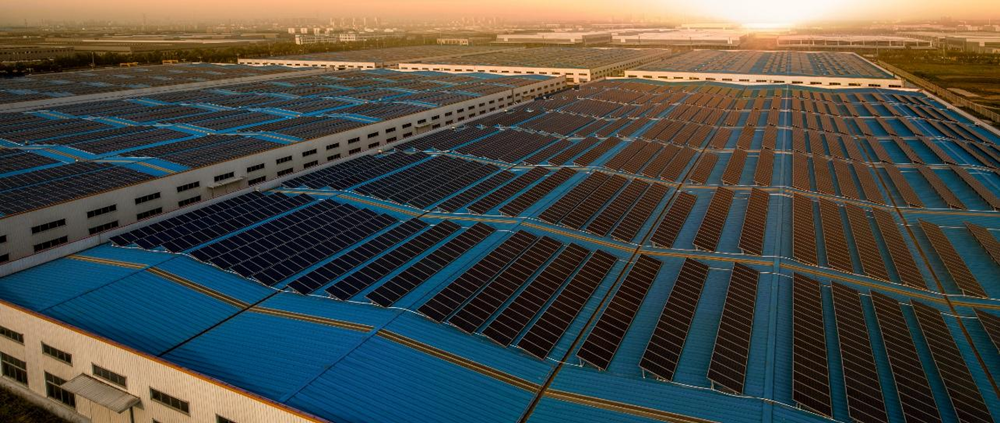Solar panel is one of the most important components in the solar power generation system. Its function is to convert the solar energy into electrical energy, and then output DC electricity to store in the battery. Its conversion rate and service life are important factors to determine whether the solar cell has use value.
The solar cells are packaged with high-efficiency (more than 21%) monocrystalline silicon solar cells to ensure sufficient power generated by the solar panels. The glass is made of low iron tempered suede glass (also known as white glass), which has a transmittance of more than 91% within the wavelength range of solar cell spectral response, and has a high reflectivity for infrared light greater than 1200 nm. At the same time, the glass can withstand the radiation of solar ultraviolet light without decreasing the transmittance. EVA adopts a high-quality EVA film with a thickness of 0.78mm added with anti ultraviolet agent, antioxidant and curing agent as the sealing agent for solar cells and the connecting agent between glass and TPT, which has high transmittance and anti-aging ability.
The back cover of the TPT solar cell - fluoroplastic film is white, which reflects sunlight, so the efficiency of the module is slightly improved. Because of its high infrared emissivity, it can also reduce the working temperature of the module, and is also conducive to improving the efficiency of the module. The aluminum alloy frame used for the frame has high strength and strong mechanical impact resistance. It is also the most valuable part of the solar power generation system. Its function is to convert the solar radiation capacity into electric energy, or send it to the storage battery for storage, or promote the load work.

Working Principle Of Solar Panel
Solar panel is a semiconductor device that can directly convert light energy into electrical energy. Its basic structure is composed of semiconductor P-N junction. Taking the most common silicon P-N solar cell as an example, the conversion of light energy into electric energy is discussed in detail.
As we all know, objects that have a large number of free moving charged particles and are easy to conduct current are called conductors. Generally, metals are conductors. For example, the conductivity of copper is about 106/(Ω. cm). If a voltage of 1V is applied to two corresponding surfaces of a 1cm x 1cm x 1cm copper cube, a current of 106A will flow between the two surfaces. At the other end are objects that are very difficult to conduct current, called insulators, such as ceramics, mica, grease, rubber, etc. For example, the conductivity of quartz (SiO2) is about 10-16/(Ω. cm). The semiconductor has a conductivity between conductor and insulator. Its conductivity is 10-4~104/(Ω. cm). The semiconductor can change its conductivity in the above range by adding a small amount of impurities. The conductivity of sufficiently pure semiconductor will increase sharply with the rise of temperature.
Semiconductors can be elements, such as silicon (Si), germanium (Ge), selenium (Se), etc; It can also be a compound, such as cadmium sulfide (Cds), gallium arsenide (GaAs), etc; It can also be an alloy, such as Ga, AL1~XAs, where x is any number between 0 and 1. Many electrical properties of semiconductors can be explained by a simple model. The atomic number of silicon is 14, so there are 14 electrons outside the atomic nucleus. Among them, 10 electrons in the inner layer are tightly bound by the atomic nucleus, while 4 electrons in the outer layer are less bound by the atomic nucleus. If enough energy is obtained, it can be separated from the atomic nucleus and become free electrons, leaving a hole in the original position at the same time. Electrons are negatively charged and holes are positively charged. The four electrons in the outer layer of silicon nucleus are also called valence electrons.
In the silicon crystal, there are four adjacent atoms around each atom and two valence electrons with each adjacent atom, forming a stable 8-atom shell. It takes 1.12eV energy to separate an electron from the silicon atom, which is called the silicon band gap. The separated electrons are free conduction electrons, which can move freely and transmit current. When an electron escapes from an atom, it leaves a vacancy, called a hole. Electrons from adjacent atoms can fill the hole, causing the hole to move from one position to a new one, thus forming a current. The current generated by the flow of electrons is equivalent to the current generated when the positively charged hole moves in the opposite direction.
Post time: Jun-03-2019
